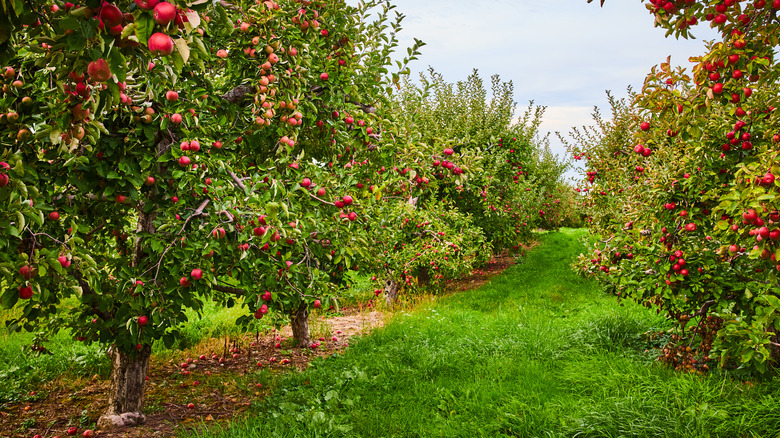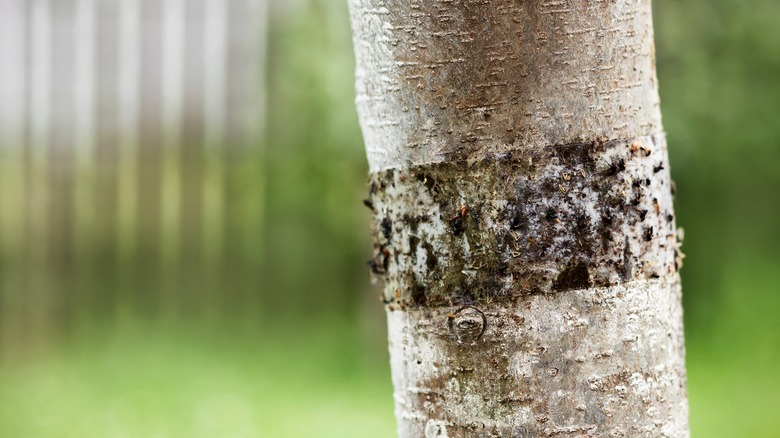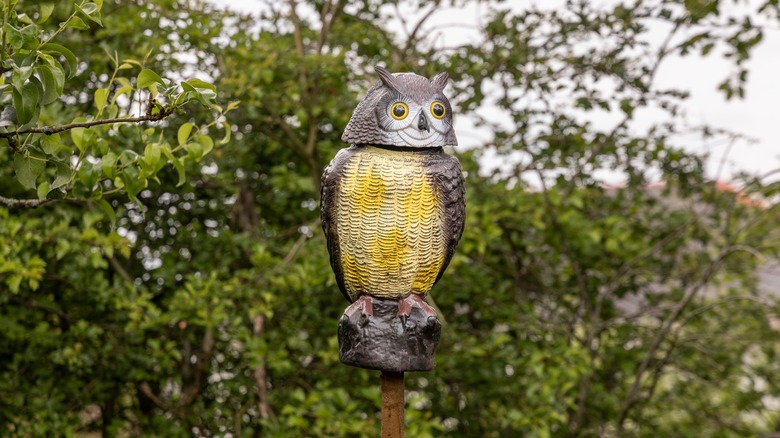Why You Should Never Use Glue Traps In Fruit Trees (& Some Safe Alternatives)
Filling your property with fruit trees that will bring a bountiful harvest to your yard and fresh produce to your table might seem like a dream, but it does come with some challenges. One of the issues you'll face when growing these trees is keeping insects and critters away from the fruit. These are two separate problems that require different solutions. But none of those answers include glue traps. These devices not only cause suffering, but they can also trap and injure other wildlife.
To deal with destructive insects climbing up your tree trunks and nestling in the fruit, some gardeners turn to sticky bands and grease traps. These items wrap around the lower tree trunks to stop pests from ascending to the higher branches once they emerge from the soil. While this method seems effective in trapping insects in a sticky substance, the problem is that it catches all insects — even beneficial bugs like ladybugs, bees, praying mantis, and spiders. The traps could even capture other wild animals. PennState Extension suggests creating a wildlife barrier if you choose to use sticky bands around your trees. That extra step could reduce the chances of unintentionally harming wildlife or beneficial bugs. The problem is, even that is not foolproof.
The dangers of sticky and glue traps
Sticky traps are similar to glue traps, as in they are meant to stop and kill pests. While the sticky variety doesn't use an adhesive as strong as glue traps, both can and will likely have grave consequences for the insects and wildlife that bring beauty and life to your garden.
Like sticky traps, some view glue traps as an easy solution to keep their plants and fruit pest-free, but the glue variety is essentially a cruel device. Instead of being a mere deterrent, the sticky adhesive on glue traps makes it impossible for animals to escape, leading to a frightening, painful, and prolonged death for every creature that happens upon it, from spiders and lizards to mice, birds, and squirrels. Note that if you find wildlife stuck and suffering on glue or sticky traps, don't try to remove the creature yourself because doing so can cause more harm than good. Instead, contact your local rehabilitation center for help.
To avoid these hazards while keeping your ecosystem intact, try incorporating safer alternatives that can be just as effective at keeping insects and other wildlife off your fruit trees.
Safe ways to protect your fruit trees
The first thing you want to do is attract good insects into your yard and garden to help reduce the destructive bug population. Invite some bug-eating birds as well by offering a place for them to nest near your fruit trees. Eastern bluebirds and swallows are especially efficient at ridding your orchard of pests. While nature goes to work, you can help it out by covering each young piece of fruit with orchard sox — footy nylons that should keep pests out. This step might be time-consuming if you have a large orchard or big trees, but it might be worth a try. Since insects crawl up the trunk, you could cover the lowest hanging fruit to see if that deters the insects from ascending.
To keep woodland creatures and birds from chomping on and invading your fruit, consider adding solar-powered fake predators that move or make intermittent sounds. You can also use a static plastic replica, but be sure to move it to different places in your orchard or it will become white noise and eventually ineffective at keeping critters out of your yard. Wind chimes or flood lights might also do the trick.
Another idea for a double-whammy deterrent that could keep both animals and insects away is using chili pepper spray on your trees. Be sure it contains capsaicin. While humans might like spicy foods, many animals and bugs do not.


